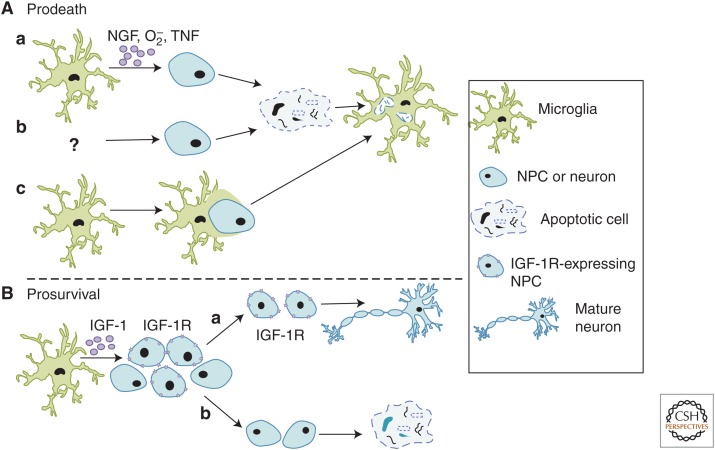Figure 1.
Mechanisms involved in microglia-mediated spatial patterning of neurons. (A) The role of microglia in programmed cell death. (a) Microglia can initiate the cell death program through a variety of soluble (e.g., nerve growth factor [NGF], O2–, and tumor necrosis factor [TNF]) and membrane-bound (e.g., CD11b and DAP12) factors followed by phagocytosis. (b) Alternatively, apoptosis of neurons or neural precursor cells (NPCs) is induced by unknown mechanisms followed by microglia-mediated phagocytosis of debris. (c) “Phagoptosis” has been described in injury/disease paradigms known to induce inflammation (Brown and Neher 2014) in which microglia actively engulf live cells. Evidence suggests that something similar may be happening in the healthy developing and adult central nervous system (CNS). (B) Microglia can also promote survival of NPCs in the developing CNS. One mechanism identified was insulin-like growth factor (IGF)-1, a soluble factor made and released by microglia, which is believed to bind IGF-1R receptors expressed by a subset of NPCs. It is speculated that those NPCs expressing the receptor survive (a), whereas those that do not express the receptor undergo apoptosis (b).

